On August 8, 2024, two Graziani descendants visited what is now the Clark Lake Community Center. For one-hundred years, this cottage, built by Benjamin Graziani, watched over the lake from Kentucky Point, until it was floated down the lake in 1997 to where it now stands in the County Park.
On this visit, Ray Albrektson and his wife, Kathy, were accompanied by Ray’s brother, Erik, and his wife, Mary.
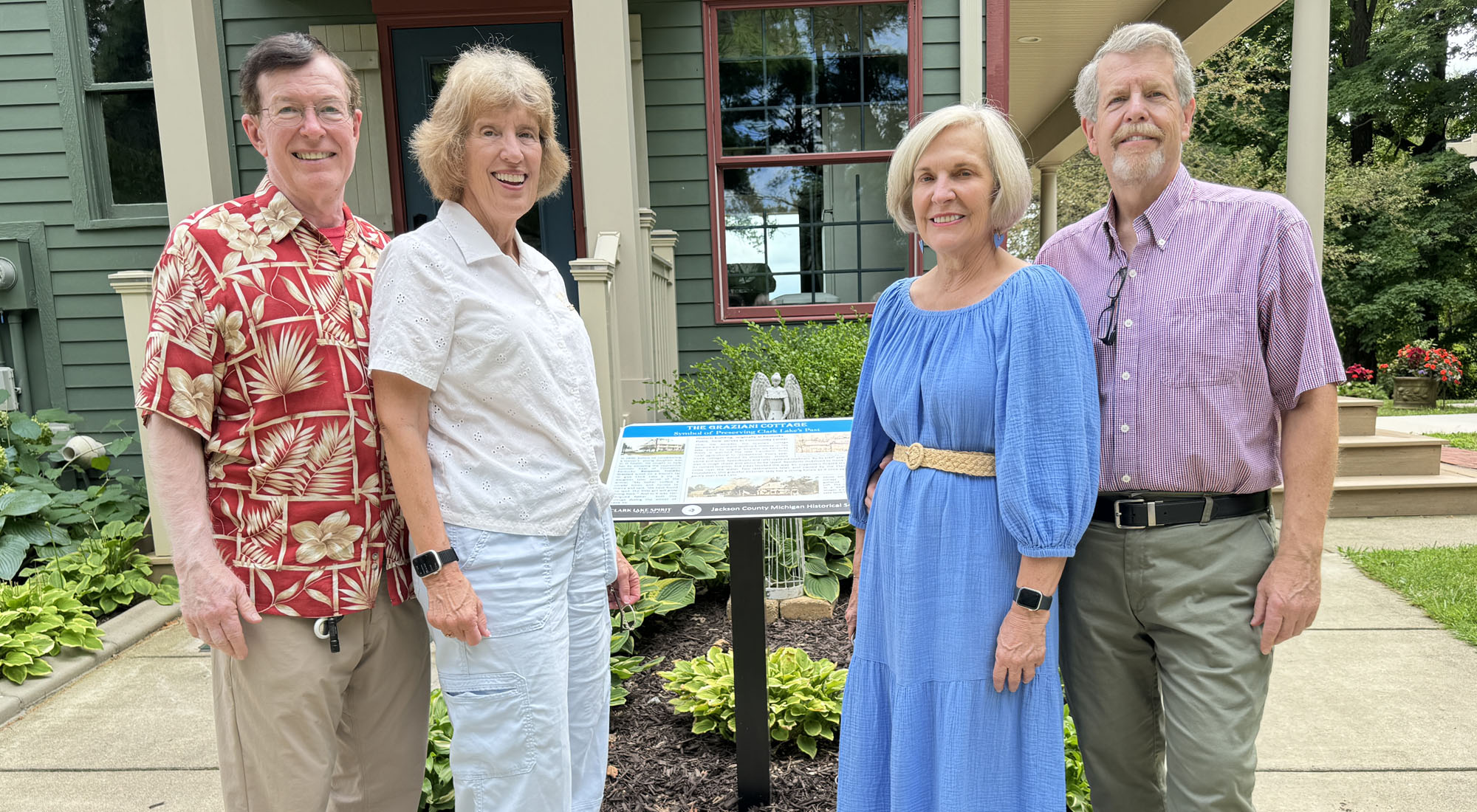 The Albrektson’s: Ray & Kathy, Erik & Mary on August 8, 2024
The Albrektson’s: Ray & Kathy, Erik & Mary on August 8, 2024
The visit inspired Ray to tell the story of the cottage, providing intimate details that solved mysteries and the unexplained previously left to conjecture.
The foursome roamed the house and relived memories. Because Ray and Erik experienced the cottage as kids, you’ll learn more about this historic icon that brings to life its history.
In his memoir, Ray takes you back to Italy where an ancestor, a wanted revolutionary, fled to England, and how the family eventually found its way to Clark Lake.
Graziani’s at Clark Lake
by Ray Albrektson
The Graziani’s story begins with Luigi Lorenzo Scarella, the birth name of the man we know as Charles Graziani (aka Carlos Graziani), born in 1806 and first son on Count Vioni, as the firstborn Scarella heir was known. Carlos scorned the aristocracy and became deeply involved in the movement for Italian unification and recovery of the papal territories for the new state of Italy (Young Italy). After Guiseppe Mazzini’s unsuccessful attempt to accomplish that, Carlos fled Italy as a wanted revolutionary and went to England as Carlos Graziani. Although only an alias, it was the beginning of the Graziani name.
On the ferry from Calais to Dover he met Emma Laura Sanham, born 1820 in Dartford, Kent. They married on June 6, 1835 and emigrated to Baltimore, Maryland, within the decade. Carlos, but I’ll refer to him as Charles, his English name, had few talents, but painting was one of them. He painted portraits and scenes for various churches. Some exist to this day in a Catholic church in Charleston, South Carolina. Charles acquired enough money to move with his growing family to a farm on the Kentucky side of the Ohio River in the 1850s. He had six children. It was his youngest, Benjamin Franklin Graziani, who became part of Clark Lake history when he bought the Kentucky Park property.
Benjamin Franklin Graziani, his friends called him Ben, Benny, or B.F., was born on November 16, 1858 in Newport, Kentucky, only a few years before Charles’ untimely death. Charles (Carlos) was one of many victims of a boiler explosion on the steamer General Lytle on August 6, 1866 just upriver from Louisville. The captain was racing and supposedly called for “more steam” when the boiler blew. He had the cash proceeds from the sale of his Kentucky farm on his person at the time the explosion. The money was never recovered.
Ben Graziani grew to adulthood and became a prominent Covington lawyer. He married an Ohio girl named Eliza Crebar York. I’ll call her “BoPeep,” as that was a nickname attached to her by her grandchildren, and I’ve never heard her called anything else. Ben and BoPeep had five children:
Laura York Graziani, my grandmother, was born in 1894 followed by Elsie (1896), Carlotta (1897), Benjamin F. Graziani Jr. (1899, called Benny), and Florence (1900). The legend is that when the Jackson & Cincinnati Railway opened in 1895, Ben sought a place where his “weak little daughter” could grow strong, but which child that was is not clear, probably Florence. That place was Kentucky Point at Clark Lake. [to read Carlotta account, please click here].
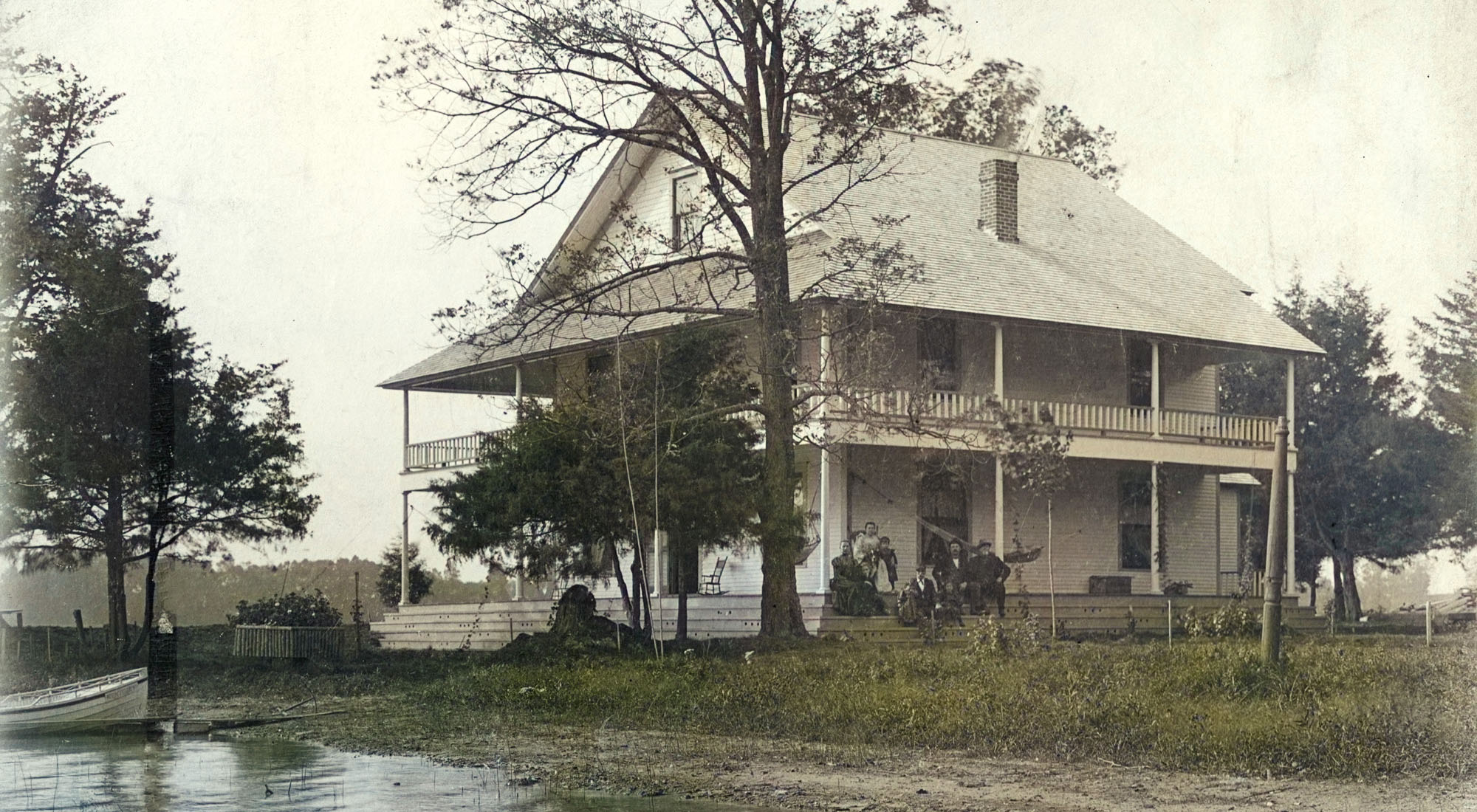 In this 1910 photo (colorized to bring out detail), members of the family are assembled on the veranda.
In this 1910 photo (colorized to bring out detail), members of the family are assembled on the veranda.
Ben Graziani had multiple cottages built with one assigned to each child. Ben and BoPeep lived in the Homestead as their children grew up and eventually took possession of their own cottages. [more about the other cottages by clicking here]. In 1922 Ben died, and his wife Eliza (BoPeep) passed away peacefully on August 6, 1933 in the bedroom that faced Eagle Point. That would be the one adjoining the bath but at the opposite end of the hallway from the top of the stairs. That room had a good view of Eagle Point. I’ll call that Laura’s room, as she had moved into the Homestead after BoPeep’s death.
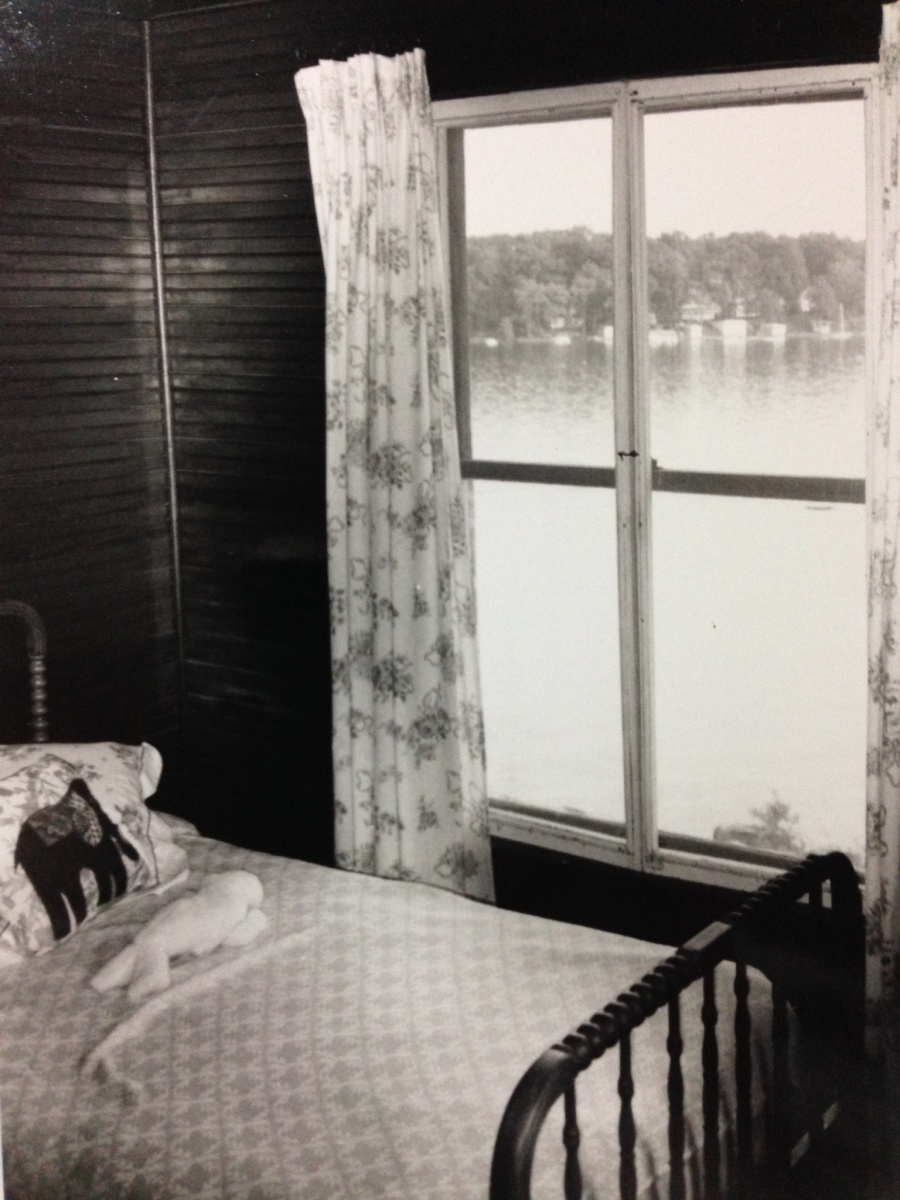
Laura left her own little cottage for the Homestead after an exchange of property and possibly cash arranged with her siblings. Nobody today knows the details. Next to the homestead was the Woods, marked with a large boulder–possibly glacial, but also possibly moved there by Ben – on which was painted “Kentucky Point.” It still exists. When I was young the paint was visible.
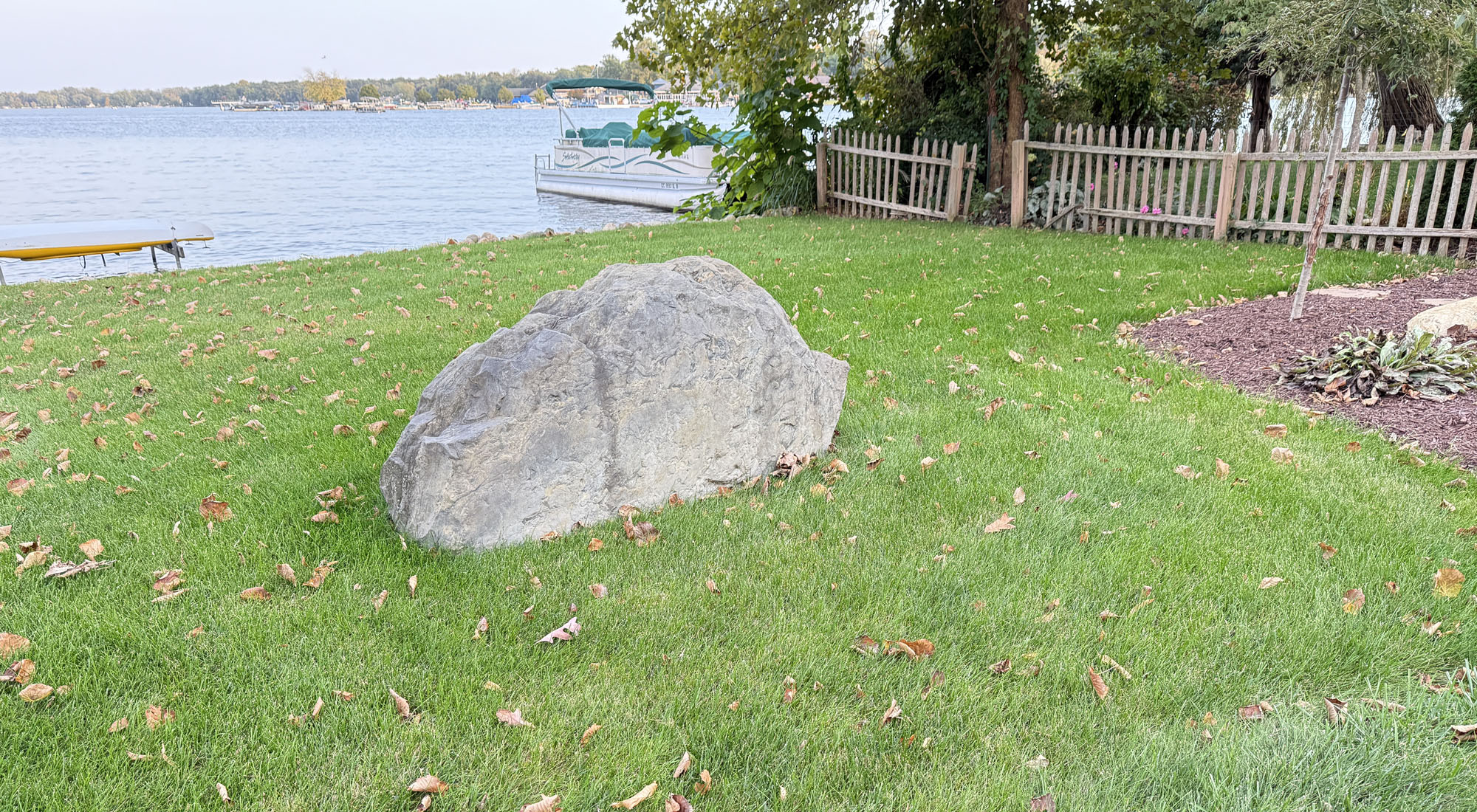
Laura summered in the homestead after the death of her mother with her own daughter, also named Laura. Despite having the same name as her mother, she was usually called Tootie by family members, a name bestowed by her younger sister Rae, my mother. I will refer to her henceforth as Tootie to avoid confusion. Tootie’s room was across the hall from Laura’s room. It had a good view of Pleasant View Lodge and the woods. Laura’s husband, John Raymond Solar, had tragically died in 1922 at the age of 28 when Tootie was only 7 and the same year that my mother, Carolyn Raemonde (“Rae”) Solar was born. Rae never knew her father. Tootie and Rae were Laura’s only children.
Ray and Kathy honeymooned in this room.
The room adjoining the bath and the landing was known as Rae’s room [northwest corner]. 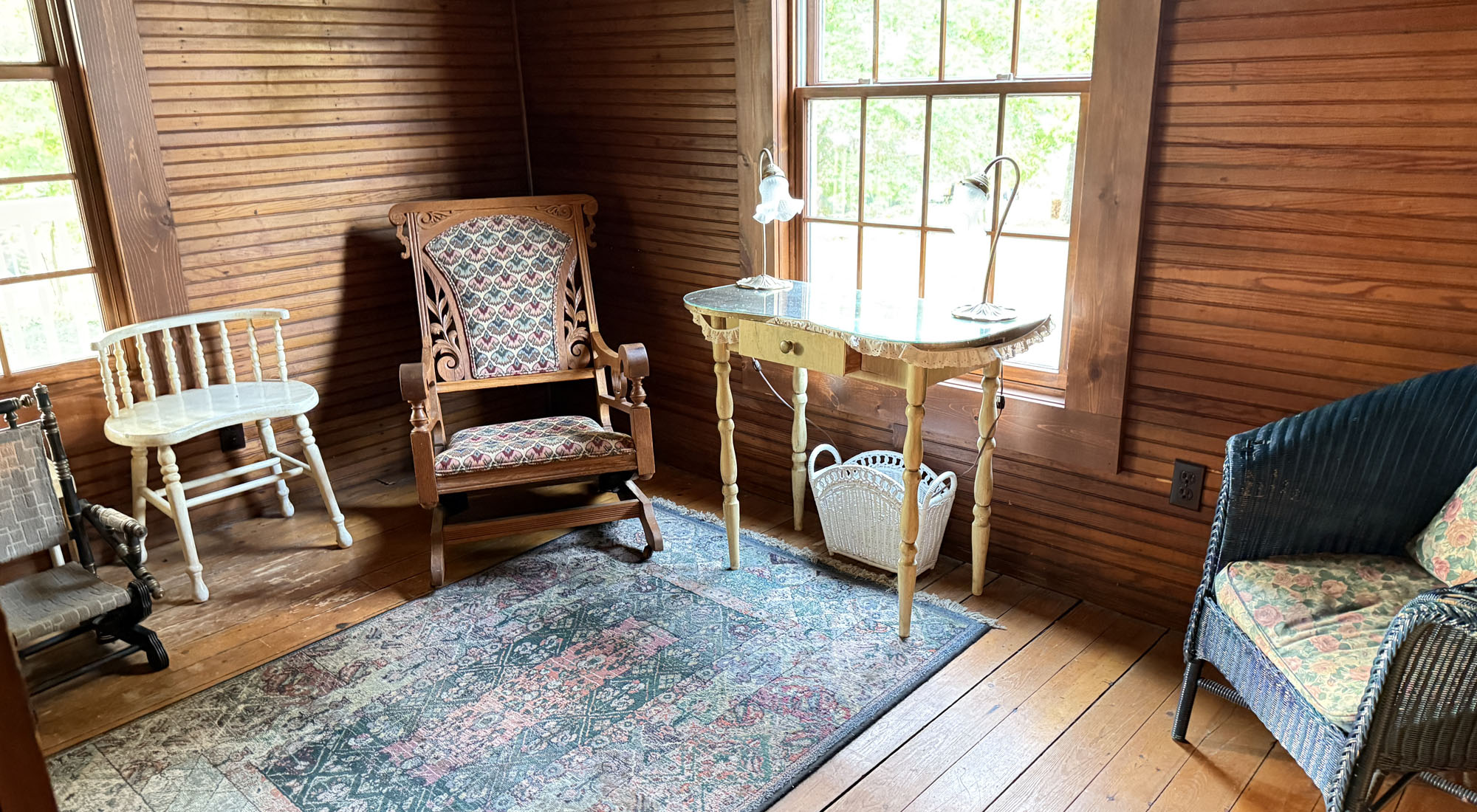
In summary, there were three desirable upstairs bedrooms. The remaining unmentioned upstairs bedroom had stairs to the attic which had been out-fitted with several partitions as servants’ quarters.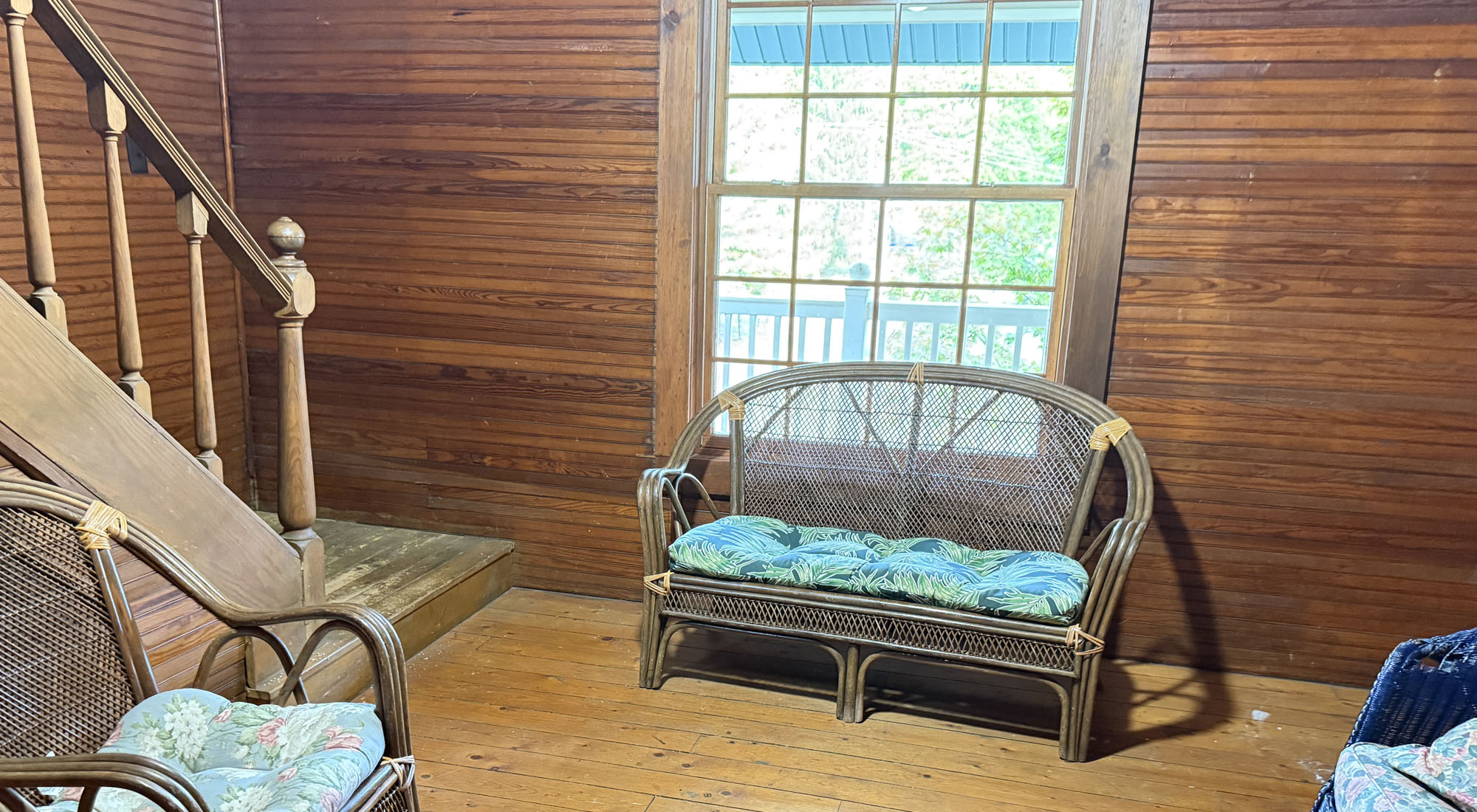
Chamber pots were used throughout the house. The upstairs bath did not acquire running water until after the postwar makeover.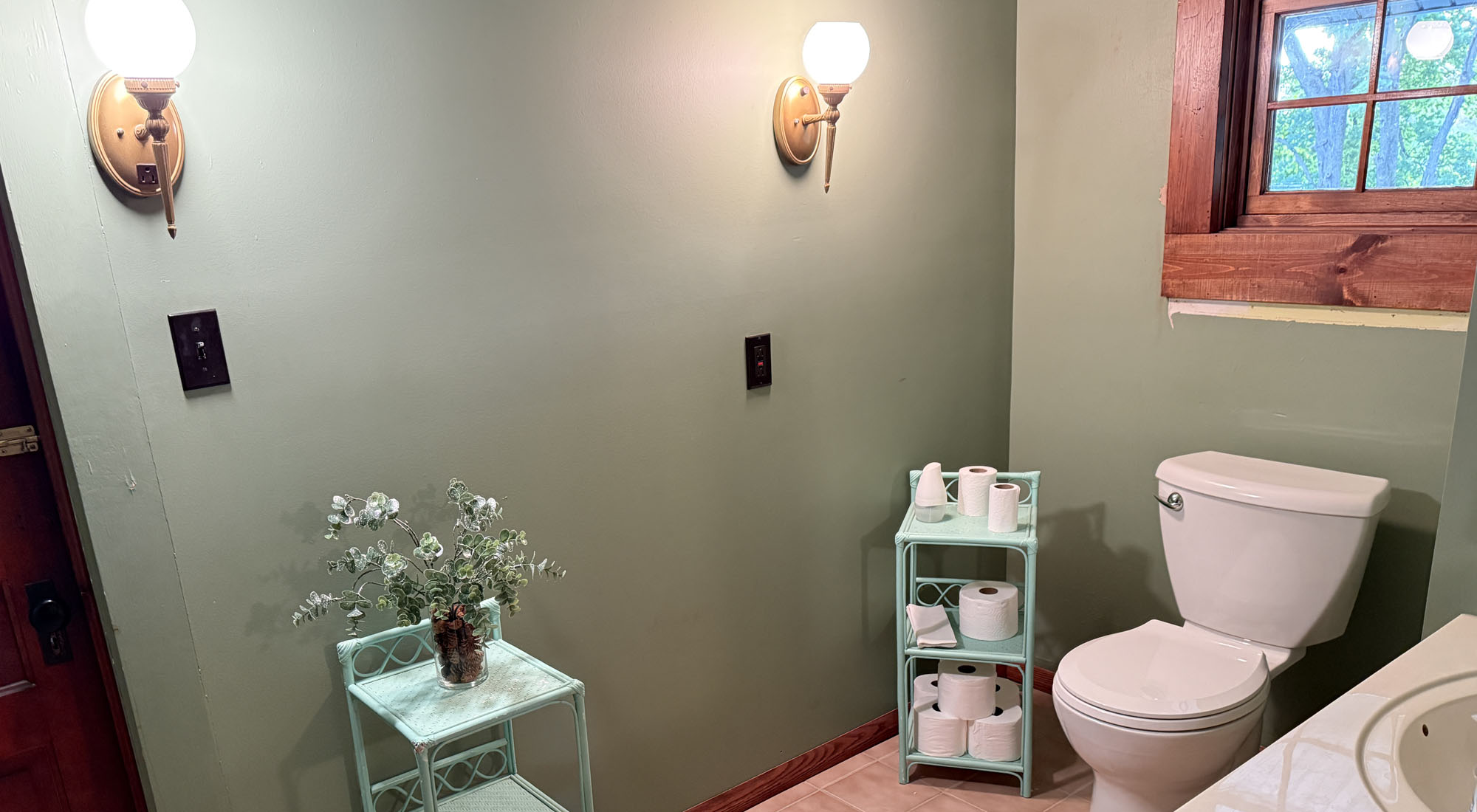 Upstairs bathroom today
Upstairs bathroom today
Laura’s room was fitted with a military hand-cranked telephone affixed to the wall facing the woods, and telephone wires ran through the woods nailed to various trees. They terminated at a similar telephone in her sister Carlotta’s room at the next cottage over. They could chat long before an official telephone arrived at the Homestead.
At some point in the 1930’s, Laura leased the property to the Yacht Club. I recall Laura saying how poorly everything was kept up under their tenancy [confirmed in Carolotta’s memoir].
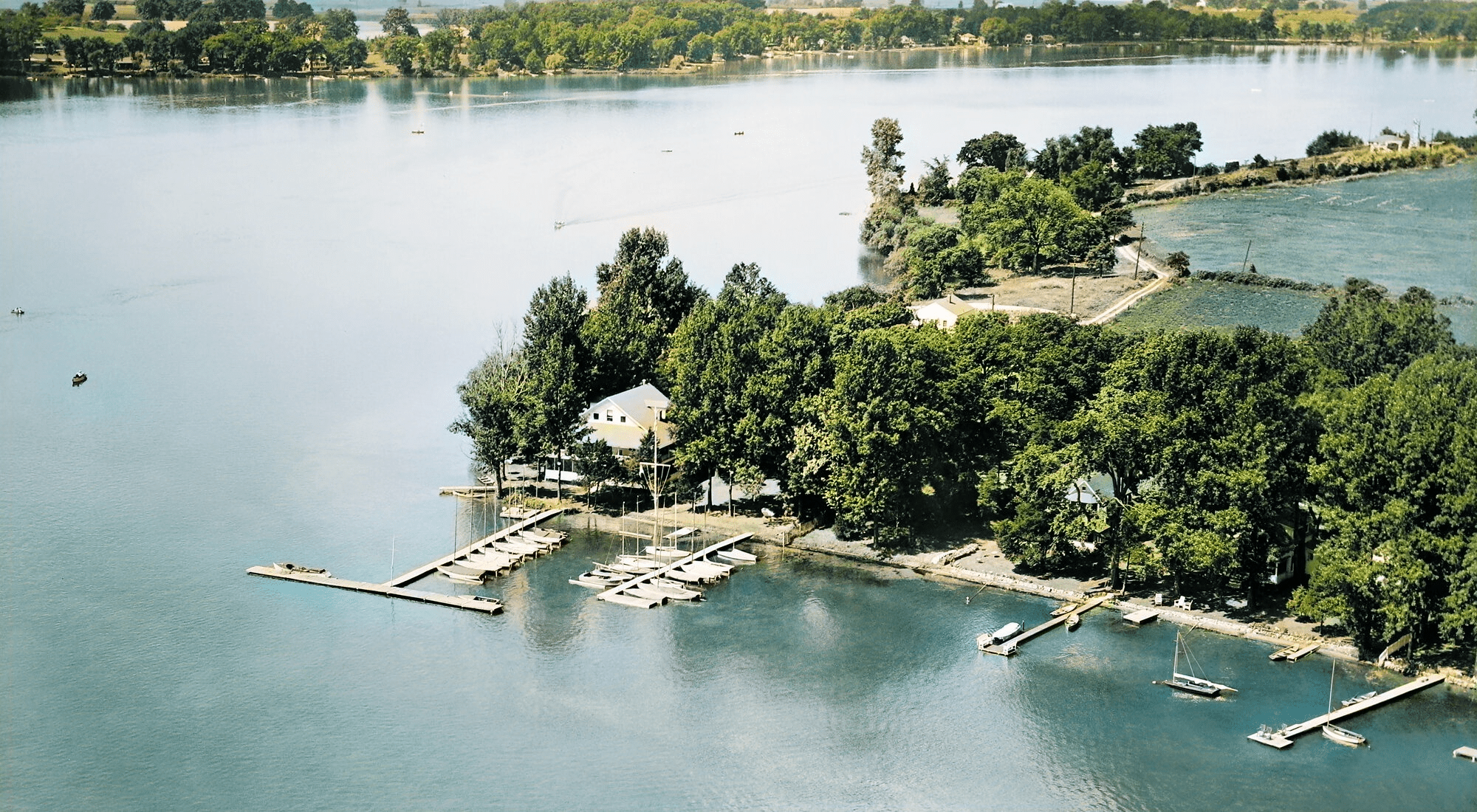 View of the Homestead during the Yacht Club years, colorized to highlight details.
View of the Homestead during the Yacht Club years, colorized to highlight details.
After WWII, the Homestead was remodeled to the state it was in during its final days at Kentucky Point. The verandas were removed, except for a screened porch which was retained on the side facing the woods. The outside kitchen shed disappeared, several windows were closed up and converted into knick-knack shelves, and the French doors from the living room to the only downstairs bedroom were removed and blocked.
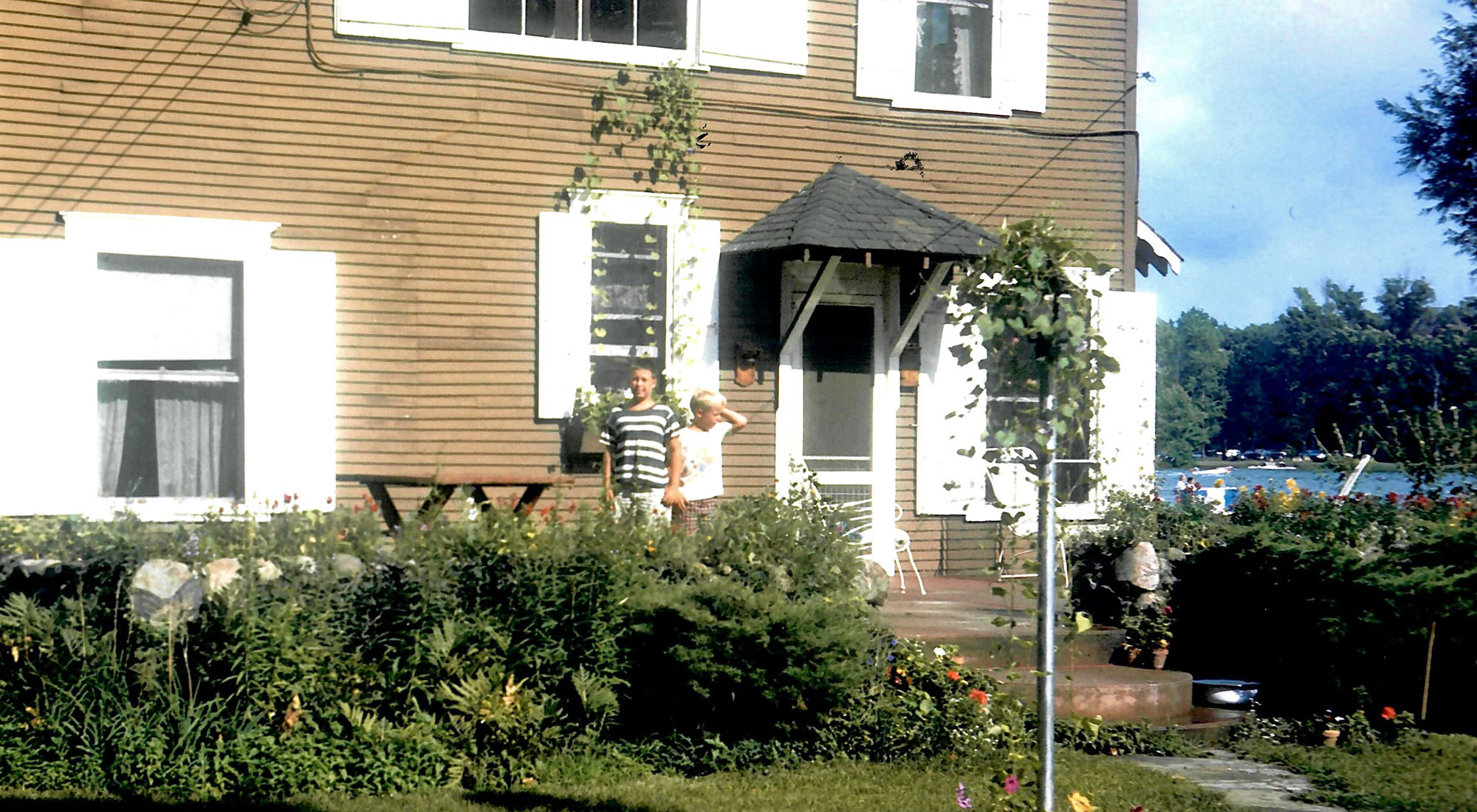 Ray and Erik
Ray and Erik
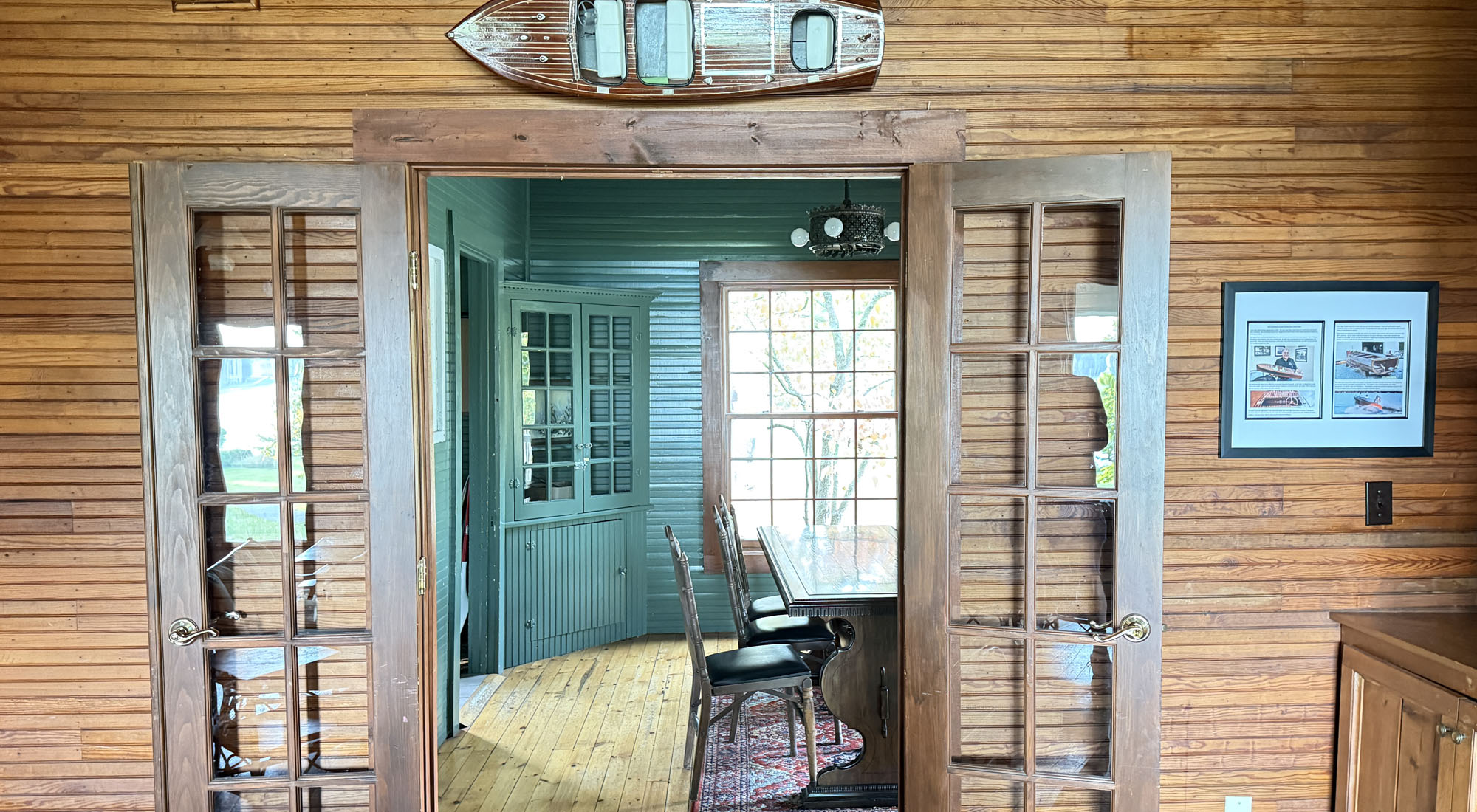 View of the French doors today.
View of the French doors today.
The electrification of the house may have begun in the 1930’s, but was certainly in place during the postwar makeover. This was also when the upstairs bathroom was fitted with a flush toilet. The running water came from the lake and was not potable. I recall hauling very heavy buckets of well-water for drinking purposes.
The area between the kitchen and downstairs bedroom was called the utility room and had a broom closet in the back that opened to the space under the stairs. This was where we took shelter in case of major storms. Once my grandmother Laura was notified on the crank-telephone that a “cyclone” was coming, and we bundled under there with her flashlight. The wind had grown to terrifying levels when we heard a pounding at the kitchen door. Laura opened it and admitted a soaking-wet fisherman who had wrecked on the point. We shared our shelter with him until the wind abated. He eventually recovered his boat from the East end of the lake.
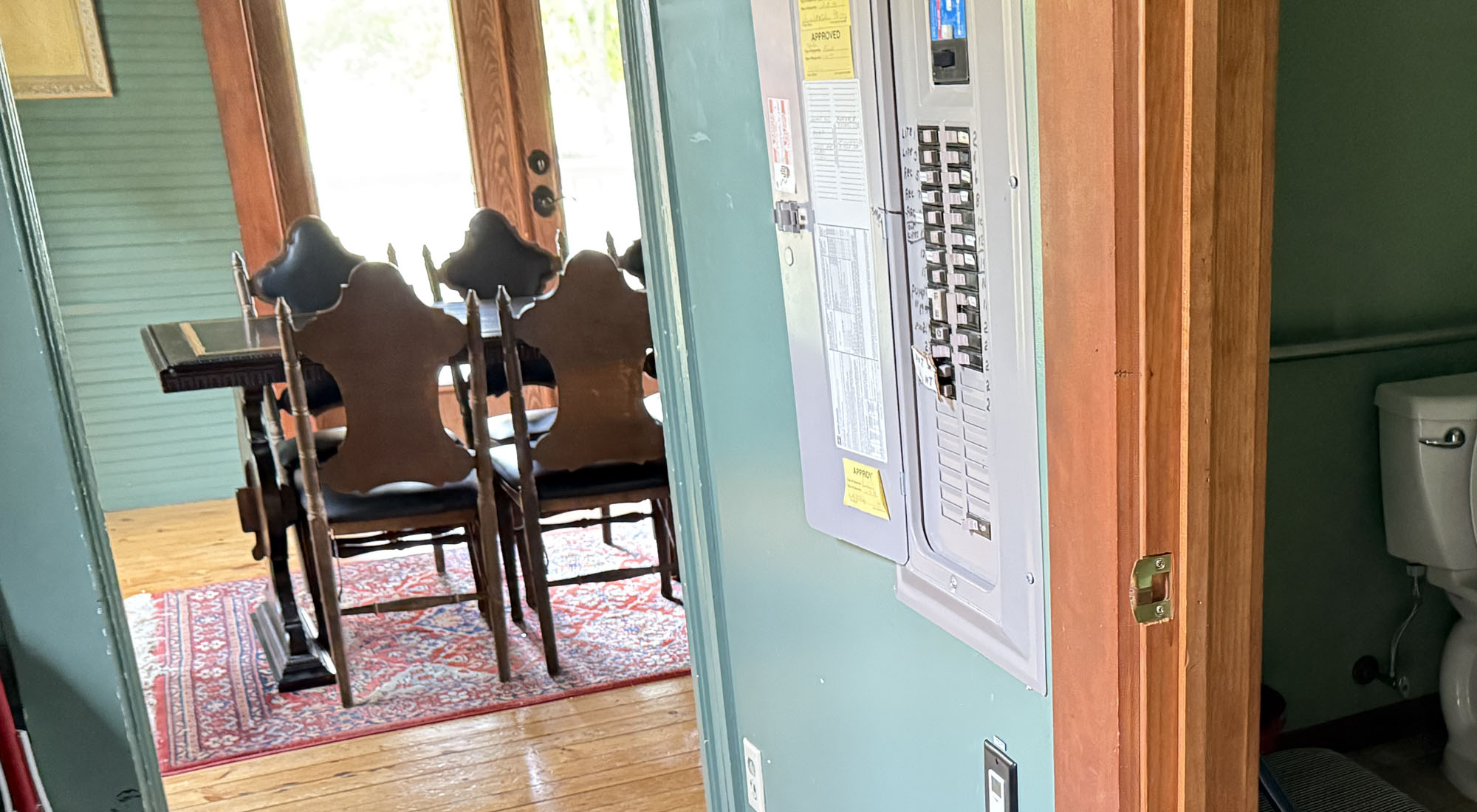 Utilities are still located here today. The downstairs bathroom was added by Laurie LaZebnik during the LaZebnik ownership.
Utilities are still located here today. The downstairs bathroom was added by Laurie LaZebnik during the LaZebnik ownership.
After I was born in 1948 my mother, Rae, (Carolyn Raemonde Solar Albrektson, younger daughter of Laura) would take me up to Clark Lake and sometimes leave me with my grandmother Laura for weeks. My two younger brothers, Erik and Philip Albrektson, joined me as Rae had married our father, Helge Ragnar Albrektson, in 1946.
“Rags” was born in Halmstad, Sweden, and had made a life for himself in the U.S. as an aviation pioneer. He left the U.S. Army Air Corp as a Major and founded a research and development firm in Cincinnati, later moving it to Covington, Kentucky. Rags began the practice of flying up to Clark Lake on weekends, buzzing the homestead until we ran onto the dock and waved, at which point he would waggle his wings and land at Napoleon Field where we would pick him up. His airplanes included a Bellanca and several Bonanzas over the years. He would often fly up weekend guests as well and always brought fireworks for the Fourth.
Rags was deputized to do something about the raccoon family that lived in the space over the screened porch on the Woods side of the Homestead. He sawed a small hole in the closet of the undesirable upstairs bedroom (with stairs to the attic), peered in, and shot the Mama raccoon with his Colt Woodsman. He collected six babies which were old enough to be deported to Mud Lake.
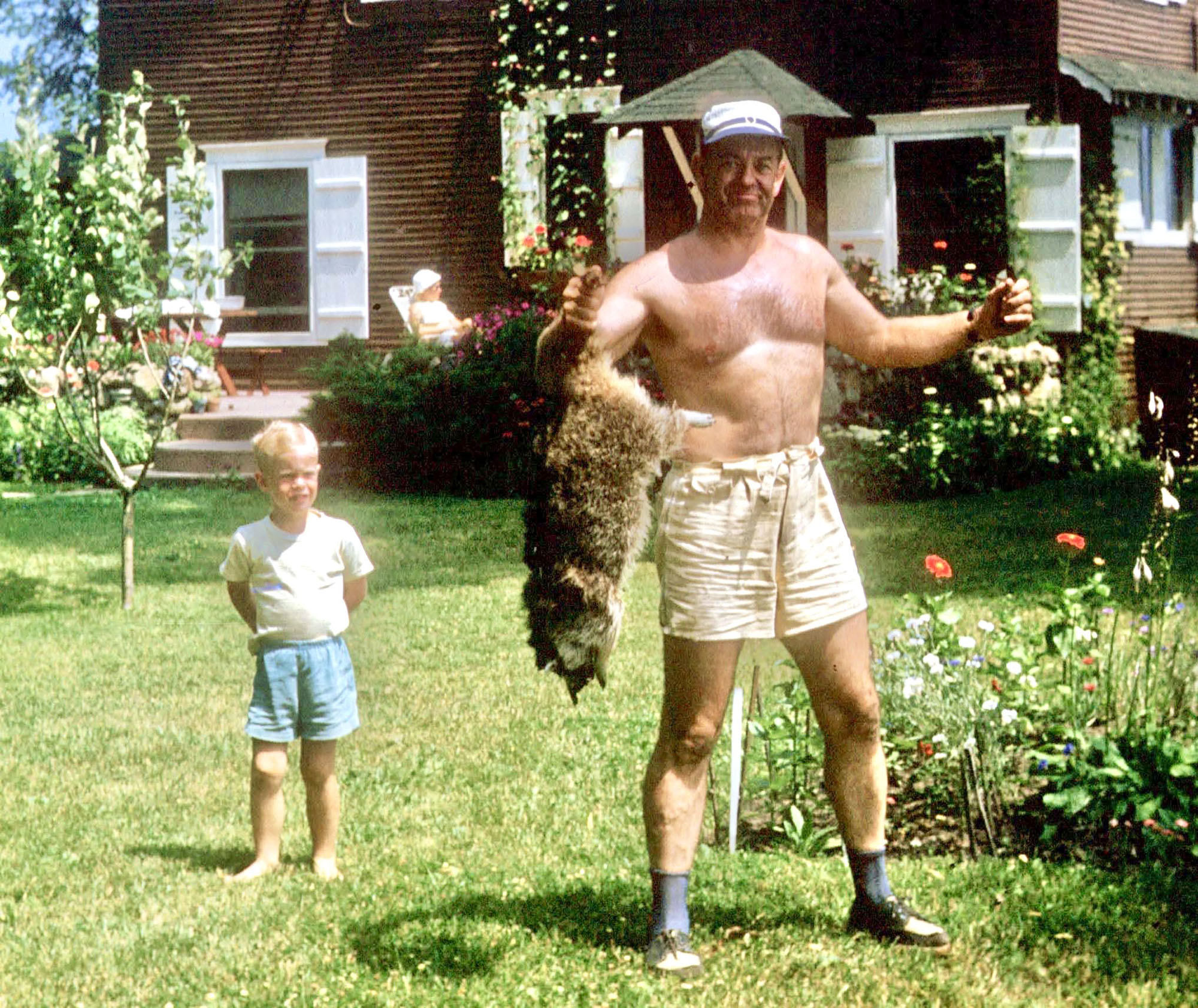 Erik, ‘coon & Rags
Erik, ‘coon & Rags
After the racoon was dispatched, I was selected to climb through the hole (it was too small for an adult) and shovel nearly a hundred buckets of raccoon poop and hand them through the hole for disposal. There were many walnuts, clam, and turtle-shells as well. I may have left some Uncle Scrooge comic books in that area. That room was always known as the ‘Coon Room from that time forward. Only Rags was willing to sleep there. The hole still exists covered with a plywood patch.
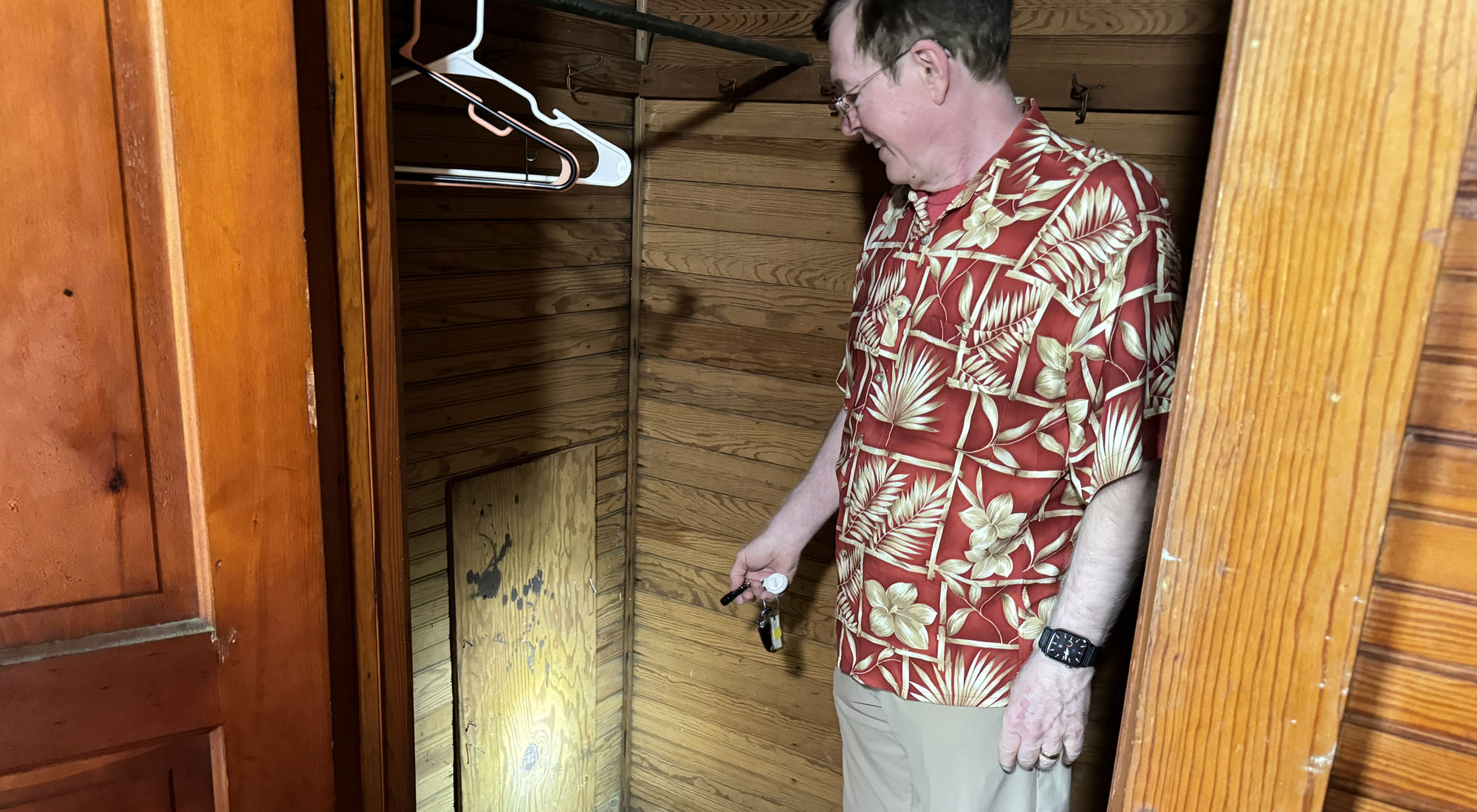
We had many fine summers in that Homestead over the years! Phillip and I married before Erik and took our families up to the Homestead. When I married Kathleen Berns in 1971 we honeymooned in Tootie’s room; the one facing Pleasant View Lodge with a window onto the Woods). I remember Kathy made a wonderful blueberry pie that was cooling on the kitchen table. Suddenly a raccoon in the between-floor overhead relieved itself in an odorous drizzle onto the table, barely missing the pie. It was delicious.
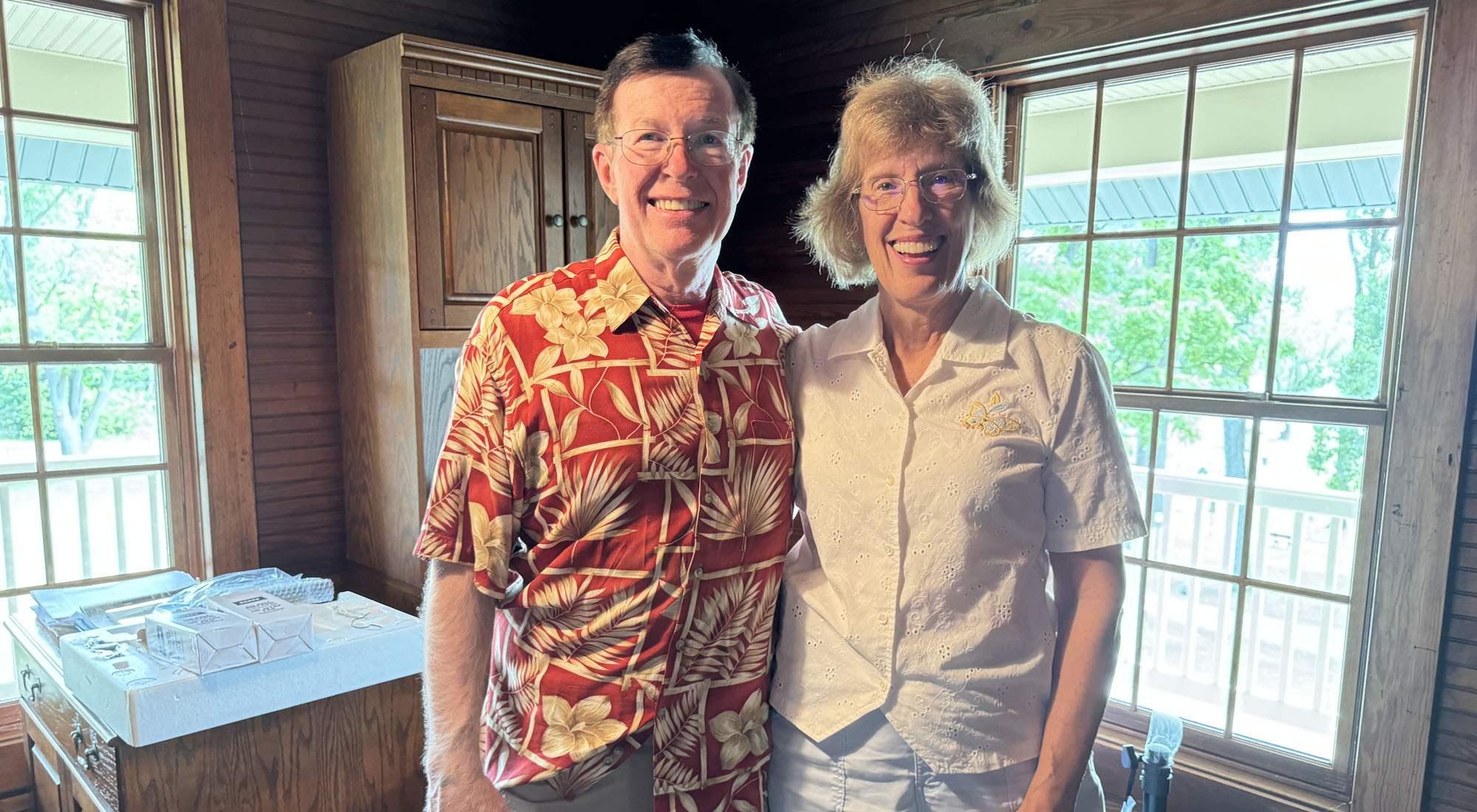 Ray and Kathy honeymooned in this room, on the southeast corner today.
Ray and Kathy honeymooned in this room, on the southeast corner today.
In time, Tootie and her family no longer came up to the lake and we boys had grown up and moved away. Laura passed away in 1982 and left the homestead to her younger daughter, Rae (Carolyn Raemonde Solar Albrektson). In time it passed into the hands of Bob and Laurie LaZebnik, and we all know the rest of the story.
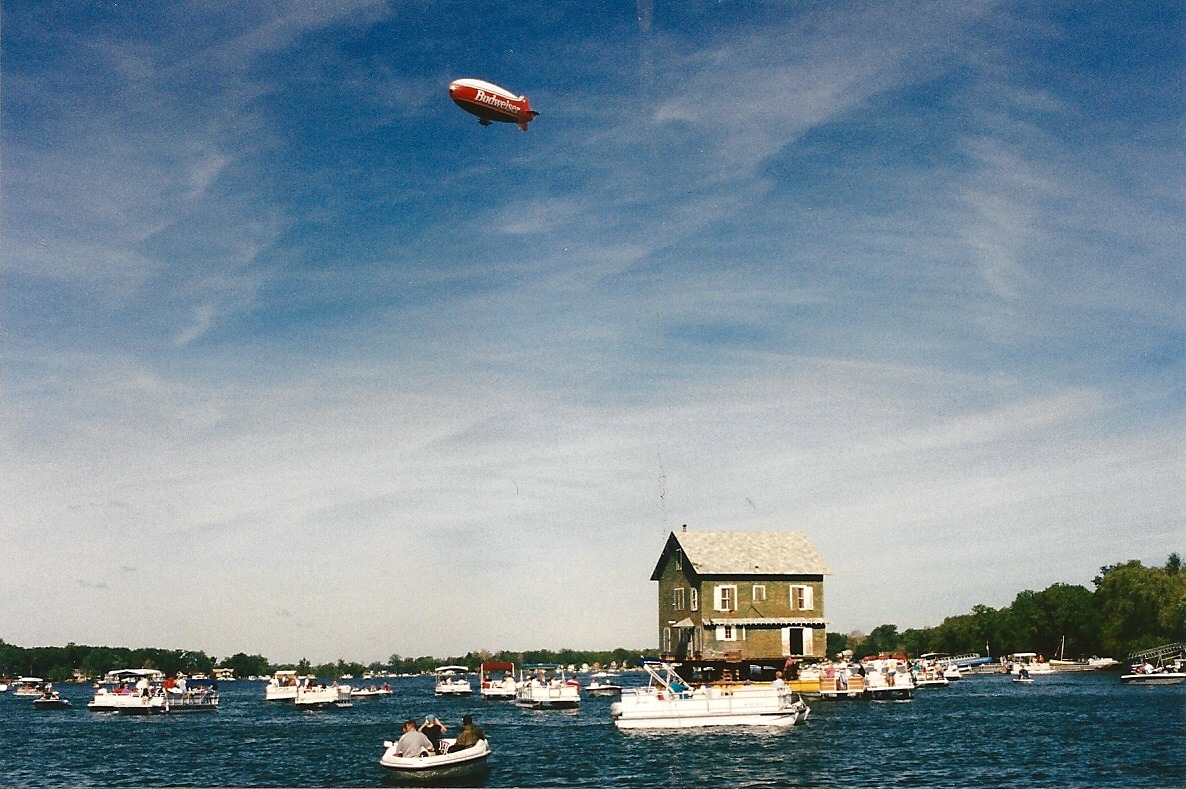
Other random memories
There was a hook in the ceiling of the living room where we boys believed that someone had hung himself, but that was just a tall tale made up by my cousin Rodney Bryson, a grandson of Carlotta Wilson (neé Graziani) from the cottage on the other side of the woods.
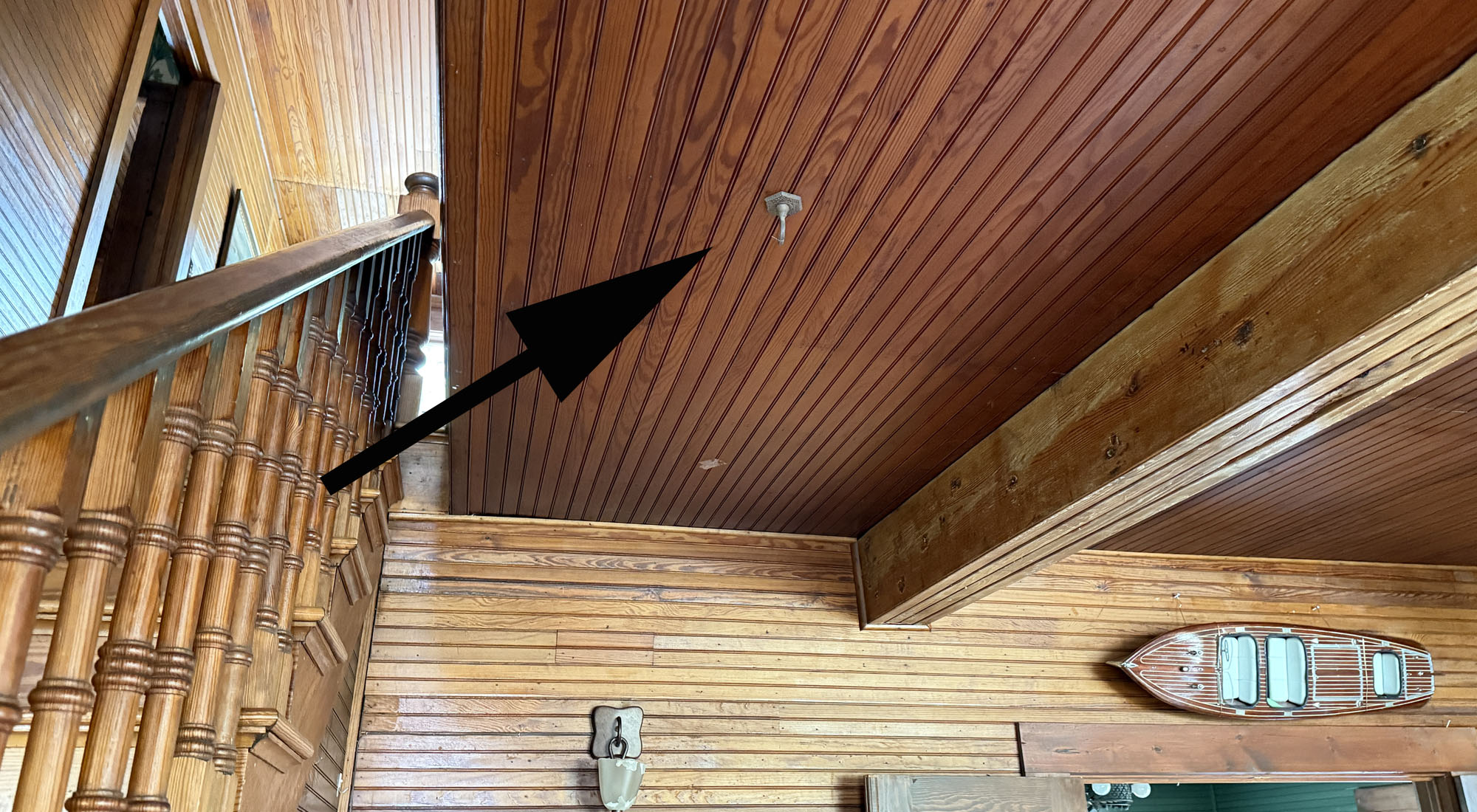
Carlotta’s husband, Jim Wilson, was an Englishman whom Carlotta had met on a Graziani family trip to England and Italy with Ben, BoPeep, and all five children. The purpose of the trip was to meet English kin and sniff around Italy for any possible inheritance. The citizens of Oneglia, near the old Scarella castle, affirmed that there was NOTHING for American cousins! But after returning home to the US, Jim and Carlotta conducted a long-distance romance, eventually married, and their grandchildren became our cousins and playmates.
Jim Wilson would also serve as Laura’s handyman. He was very gifted, and built a motorboat (called “the putt-putt”) that he and Carlotta would use to motor around the bay. He taught me how to use my finger and thumb to touch live wires (very quickly) and discern the difference between 110 and 220 volts. That method is not recommended. Uncle Jim also made a variety of Roman candles and firework fountains every Fourth of July.
On one occasion he had a project where he desired some of the old cylindrical pillars that had been extensively used in the verandas of the pre-war Homestead. After the remodel, many of them had been put to work as props for roof beams in the Homestead attic. Laura caught Jim exchanging columns there for nailed-together 2×4’s and had a fit, requiring him to replace all the ones he had removed.
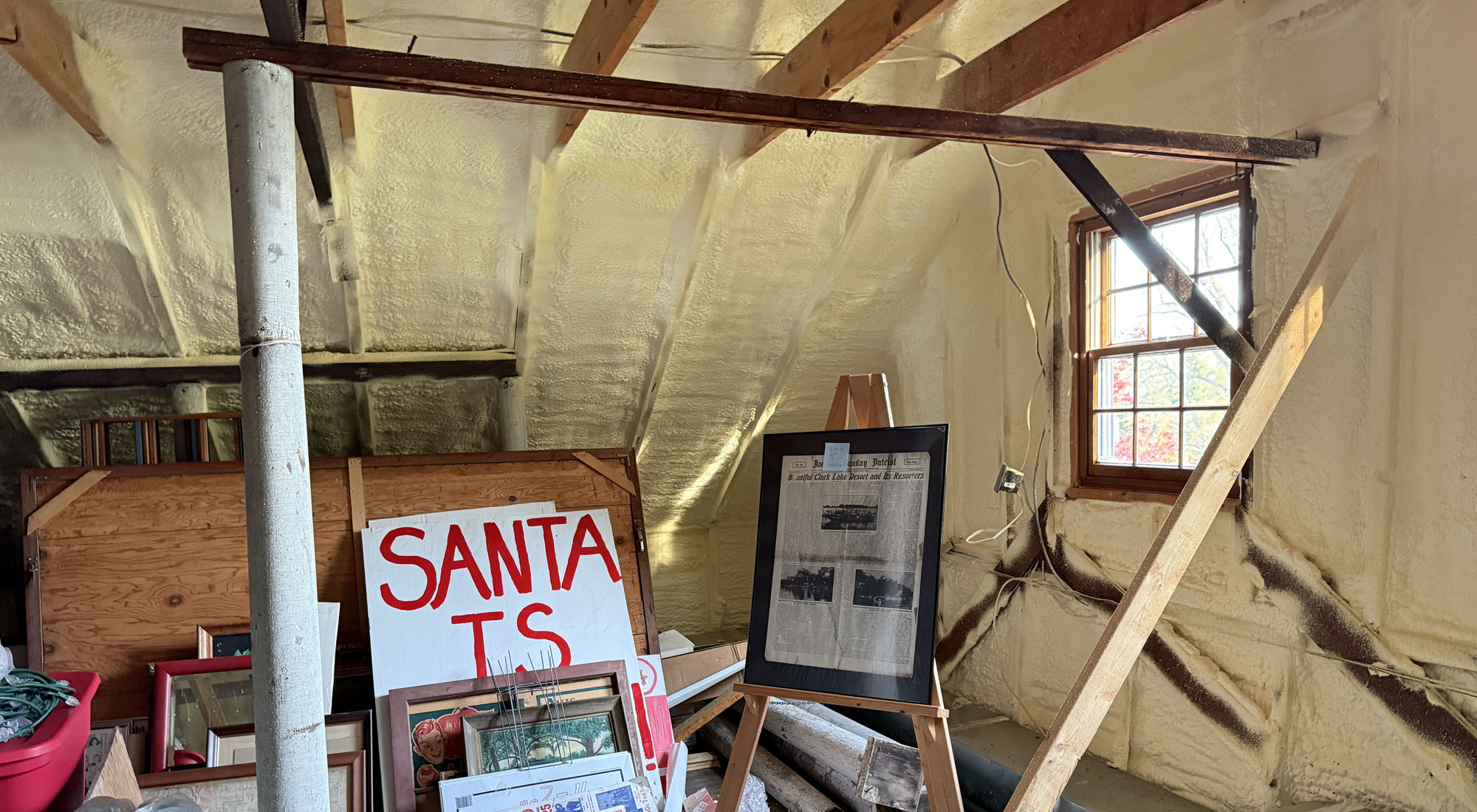
In the living room we would often play Scrabble or Canasta, and Laura would have her friends over from Jackson for bridge parties. She had many Jackson friends, and made a weekly trip to the Carnegie library for detective novels. That was where my brothers and I discovered the joy of reading.
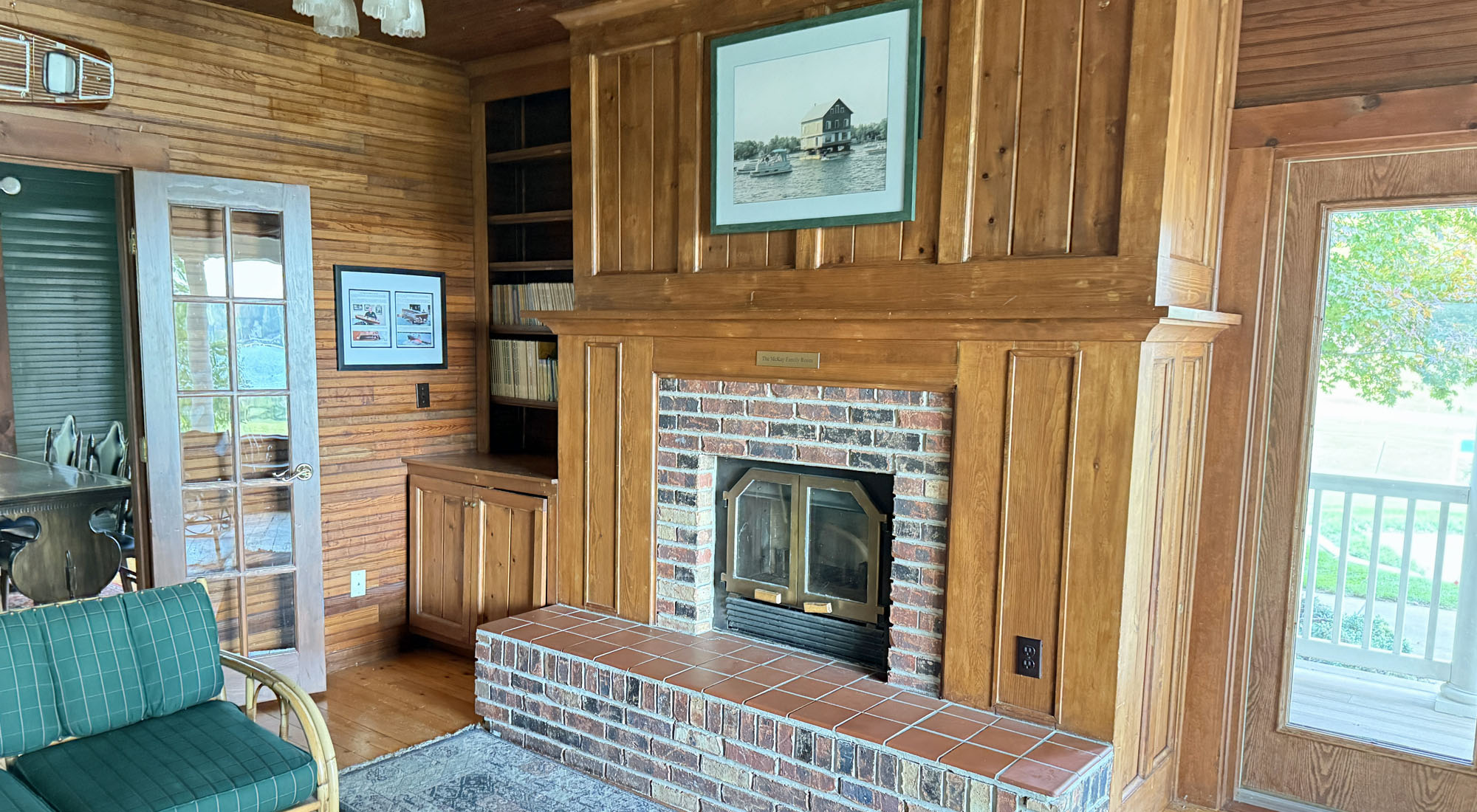 Laurie LaZebnik added the fireplace and bookshelf during the LaZebnik ownership.
Laurie LaZebnik added the fireplace and bookshelf during the LaZebnik ownership.
The chief of police in Jackson was a close friend of Laura and gave her a .38 Colt “Detective Special” revolver and a box of ammunition for personal defense. She also had a lightweight double-barreled shotgun that she had used to hunt birds as a teen. Sadly, this shotgun, my brother Philip’s inheritance, was stolen in a mid-winter burglary. She shot quite a few birds in the local area, and also taught us boys how to find nightcrawlers and fish for perch, bluegills, and sunfish. The shotgun had hung on the wall over the living room fireplace. A Black Forest Cuckoo Clock had hung on the wall between the living room and the screened porch, another casualty of the burglary.
We had several boats – a Feathercraft aluminum runabout that was one of the lightest lake boats ever made. It was possible to ski at full speed with its original Evinrude 25 hp motor. Feathercrafts had been used in a trick boat show at Cypress Gardens, Florida, and Rags just had to have one. He also had a Rebel sailboat, which we boys crewed, and eventually I had my own Sea Snark in 1960 which I kept until recently. It sailed three generations of my own family.
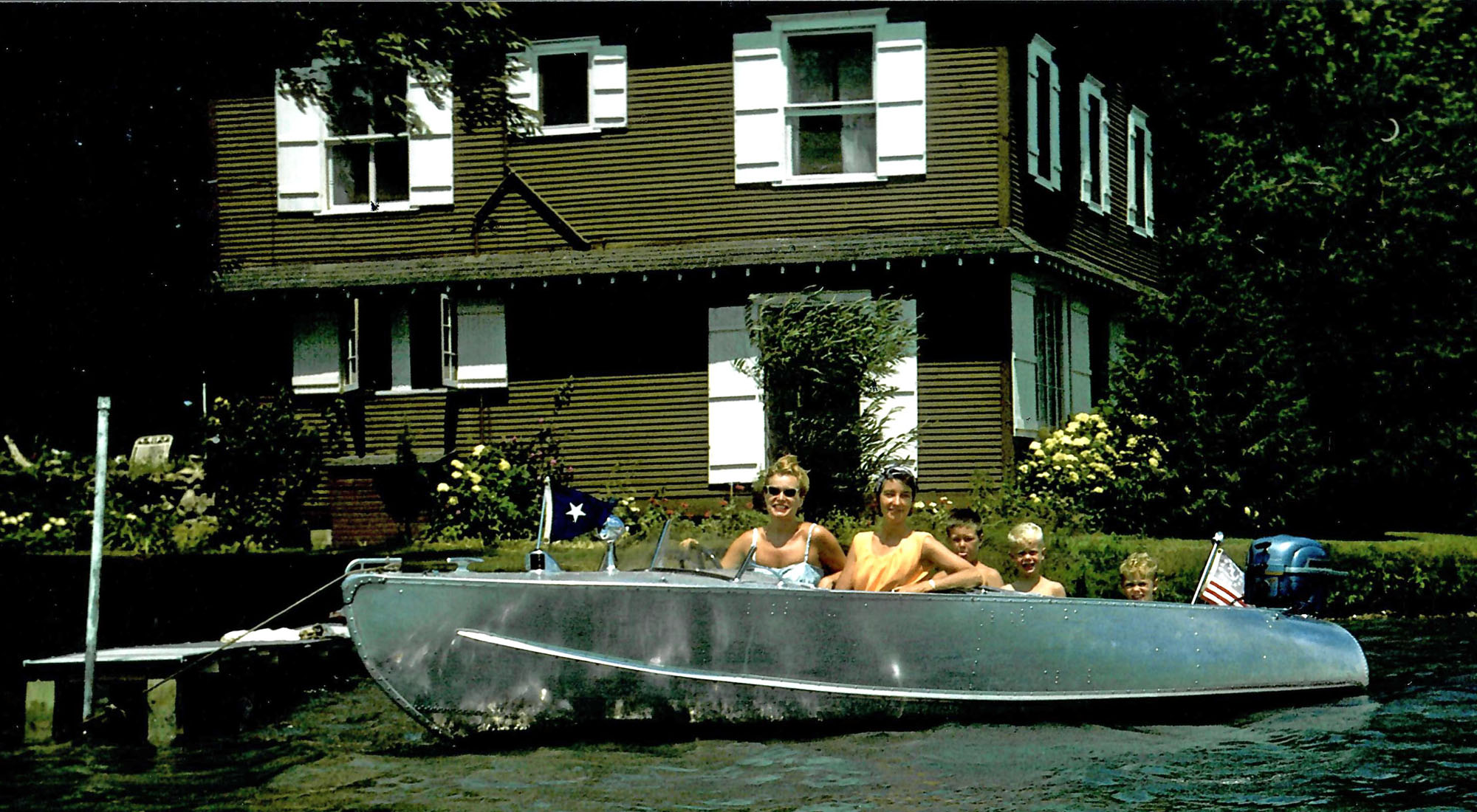 L to R: Rae Albrektson, an unnamed high school best friend of Rae, the kids are Ray, Erik, and Philip. Rags took the photo
L to R: Rae Albrektson, an unnamed high school best friend of Rae, the kids are Ray, Erik, and Philip. Rags took the photo
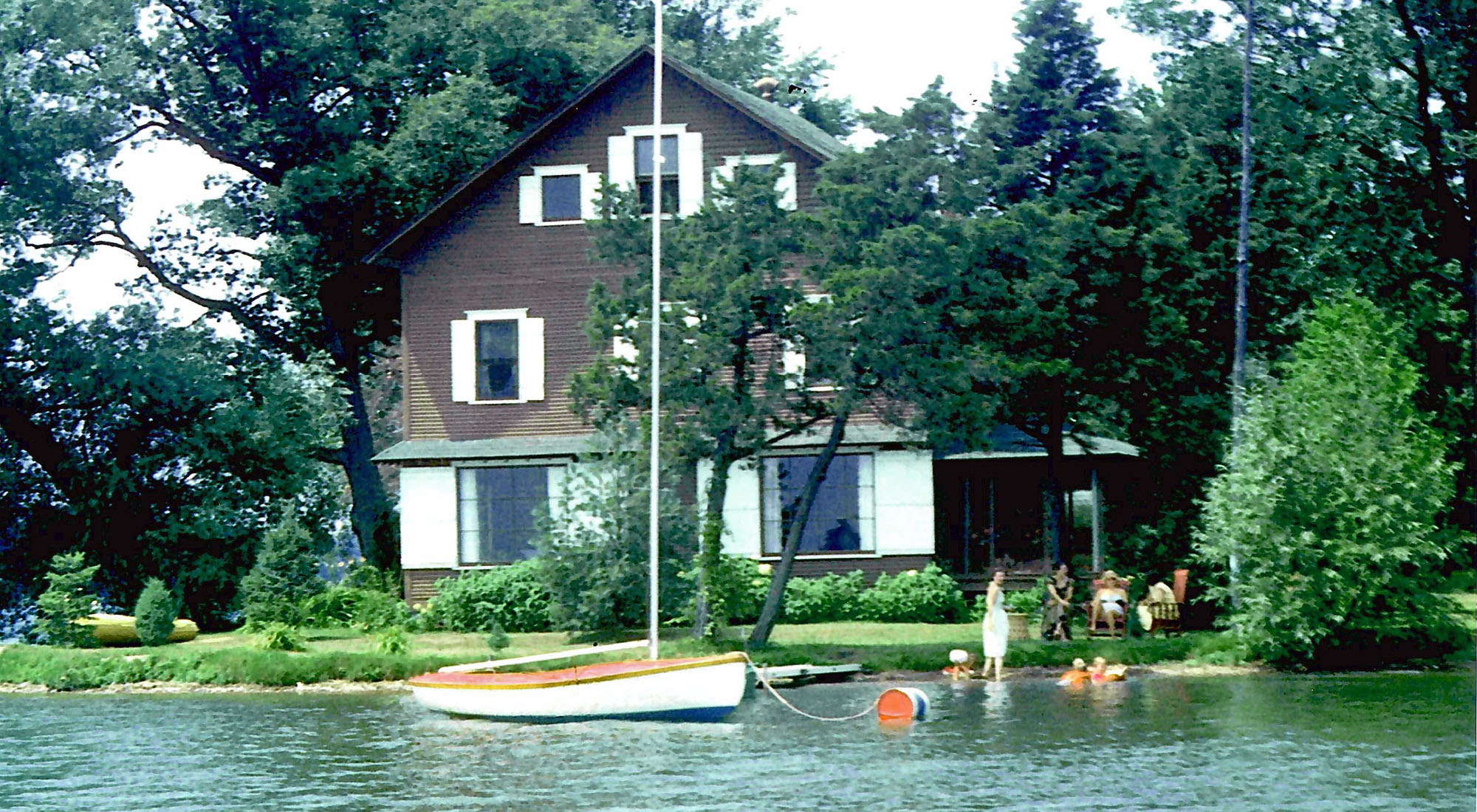
The woods was spooky and filled with mosquitos. The well-water was delicious, as I just reaffirmed with a quick visit to the LaZebnik’s well [August 8, 2024]. The well at Carlotta’s cottage, labeled Solar 1953, is exactly as it was in the 1950s. My brothers and I had a trick for swimming in Clark Lake when the water was really cold. We would go to Auntie Carlotta’s place and jump in the well, huddle there up to our necks and count to ten, then run and jump off the end of the Wilson’s dock – and the lake water felt toasty warm! It was like magic.
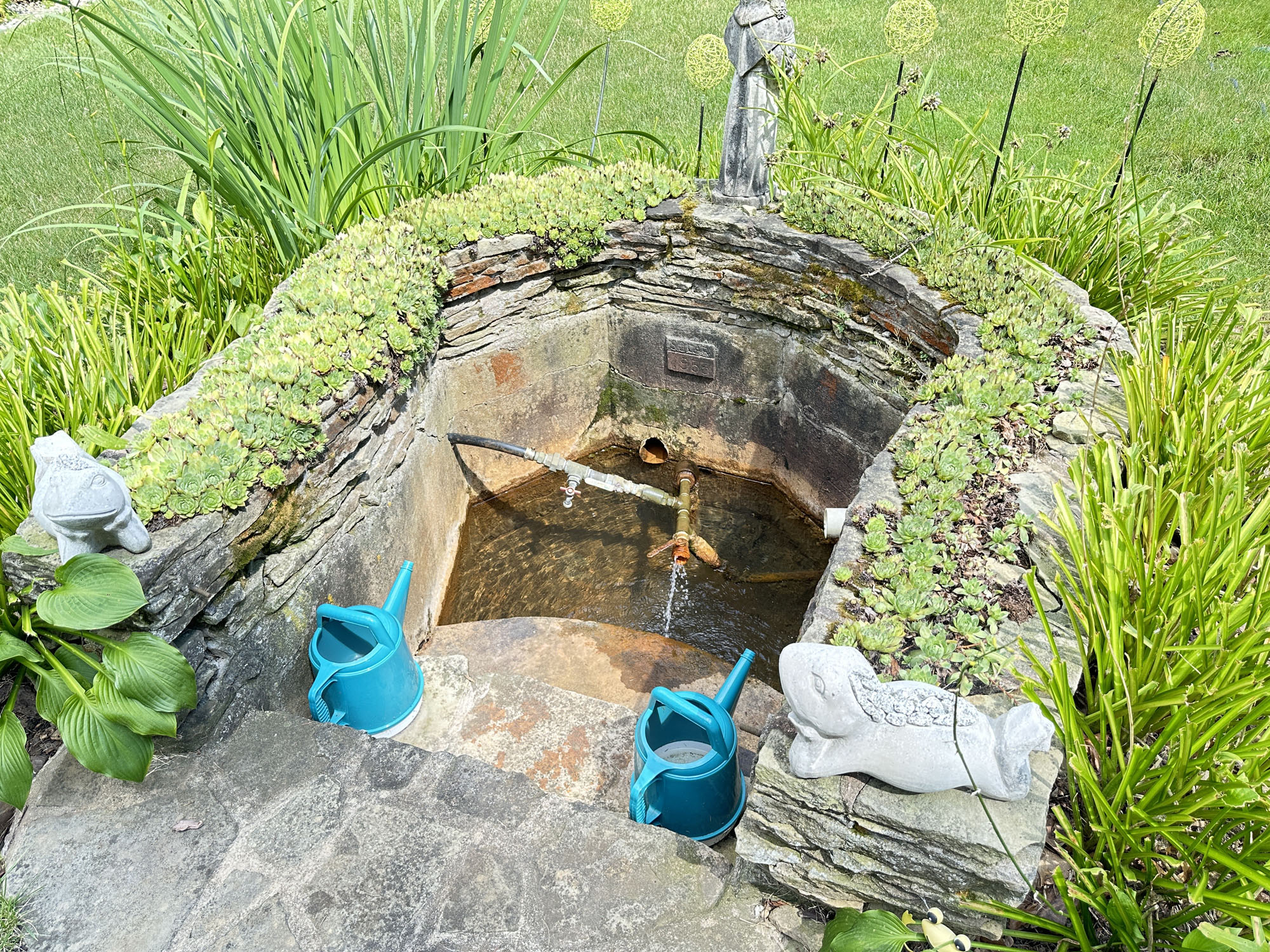
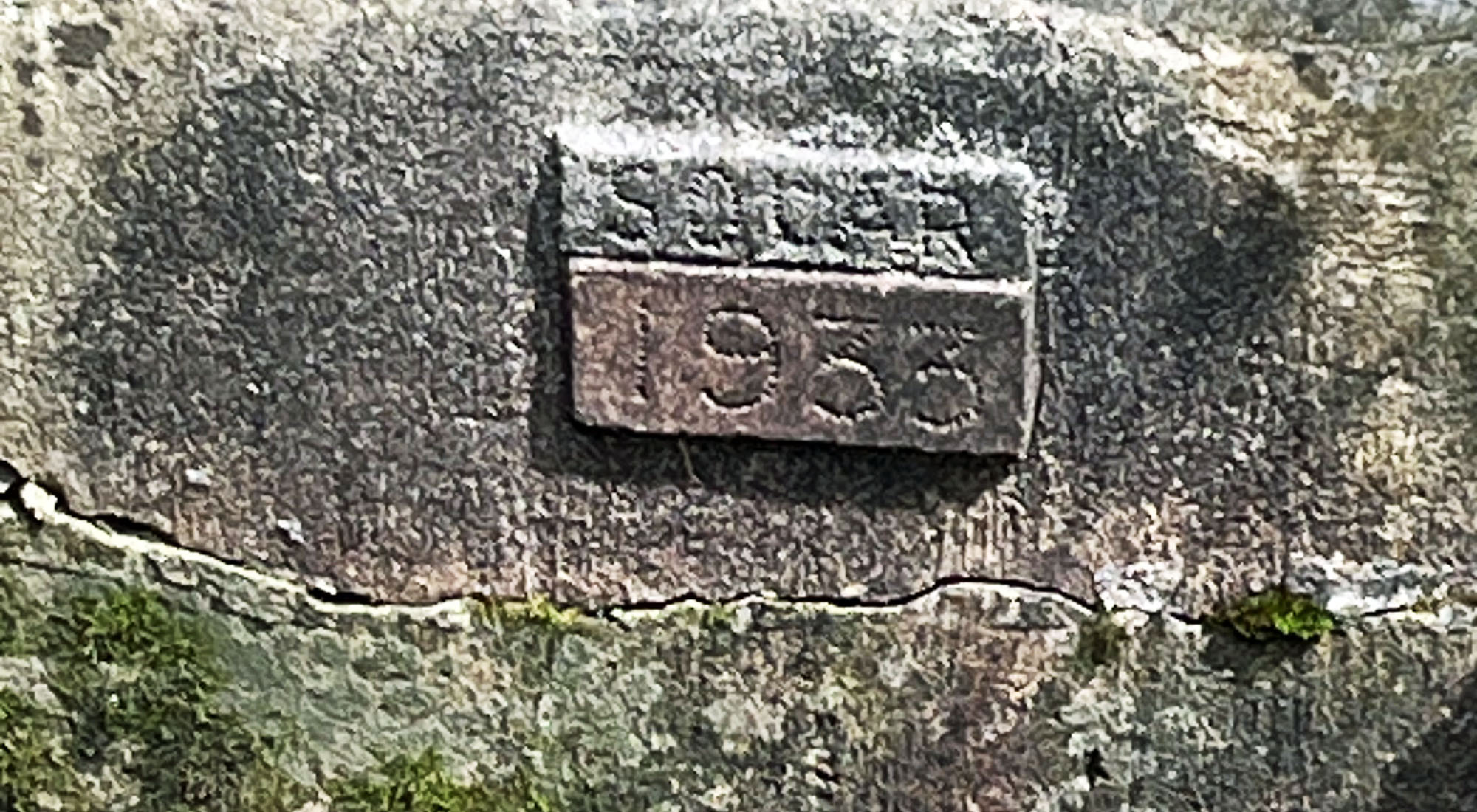
There was a small shed at the lake edge bordering Dr. Riley’s place. Some say it was once an ice-house, but it was also used to stash coal for the large cylindrical stove in the living room. The fireplace had been closed, and that coal stove could heat the whole house. The ice/coal house was converted into a spider-filled playhouse for the use of the kids in the 1950’s.
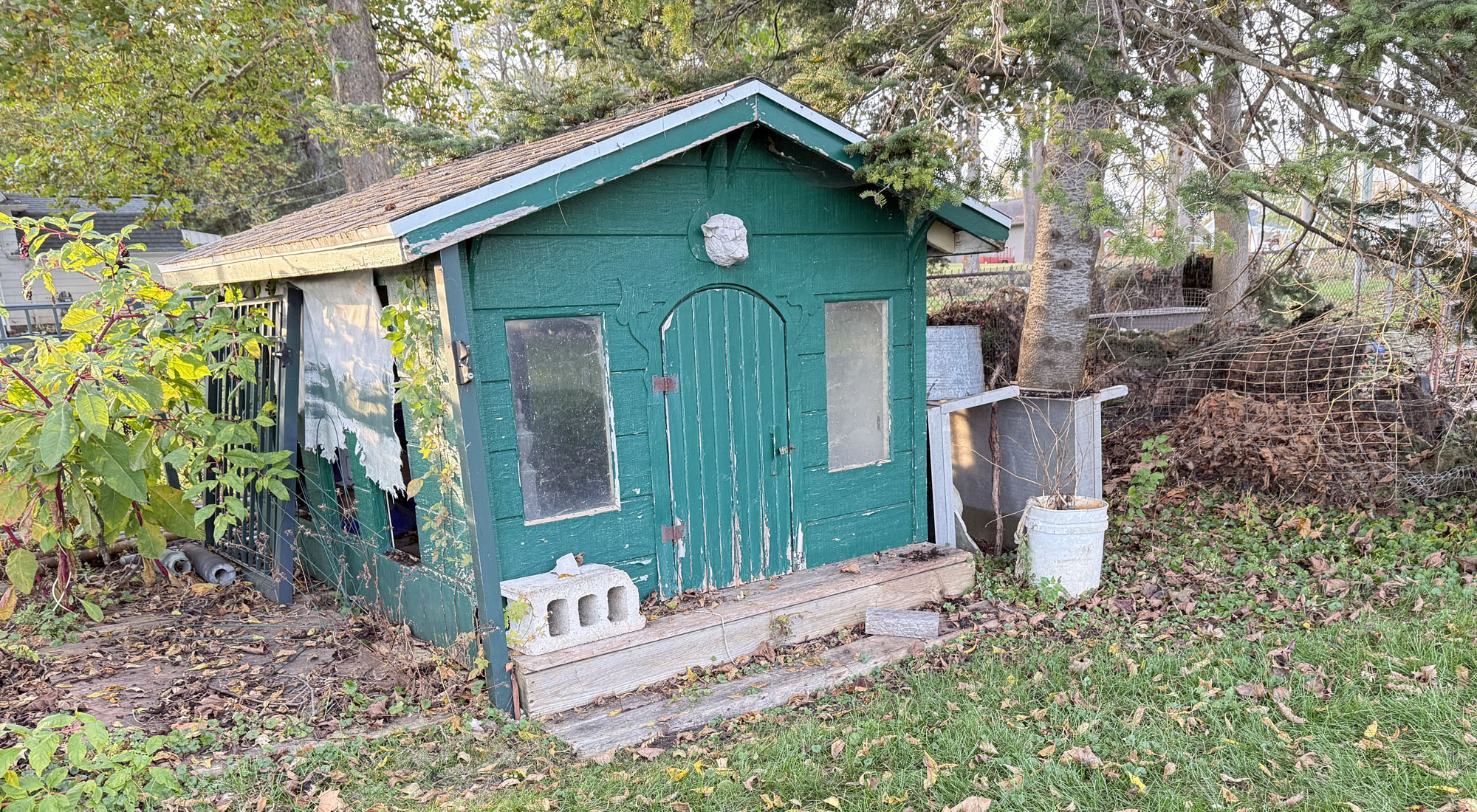
The outhouse now reunited with the restored homestead may be a postwar replacement of earlier outhouses. Laura had it made with two adult holes and a child hole. I remember going there with my mother (Rae), and Laura (Nan), and proudly sitting “like a big boy,” in a row all participating together. It was also my duty to find sticks with which to swish around inside the holes to discommode the spiders who loved to build their webs there. Nobody neglected that task if they knew what was good for them.

[Click Completing the Movement to learn how the outhouse was reunited with the Homestead at the County Park]
There was a grape arbor in the yard not far from the outhouse that produced excellent dark-purple Concord grapes that were preserved as grape jelly. Laura also had extensive flower beds around the pink cement patio that remained after the outdoor kitchen/shed was removed in the postwar makeover.
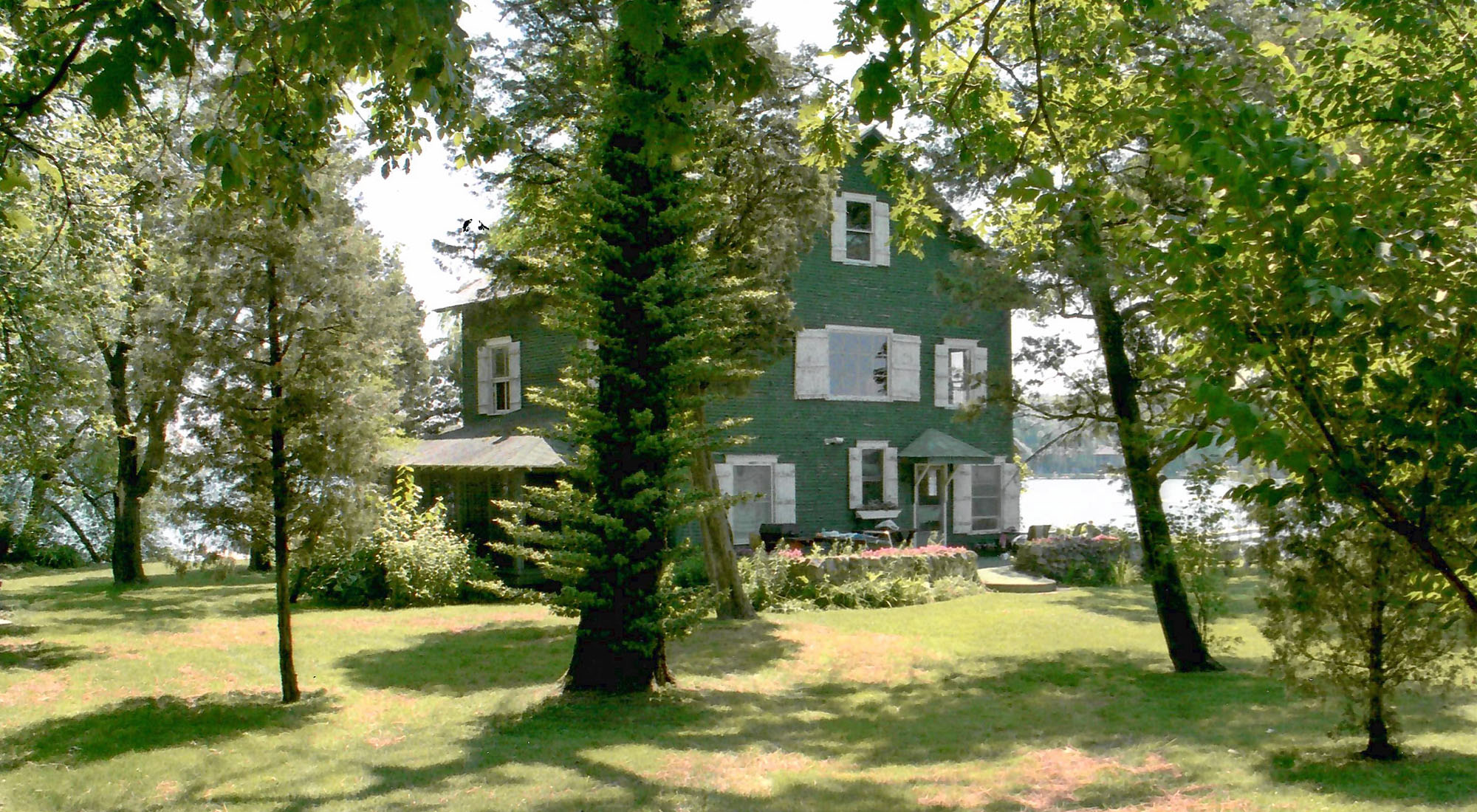
I hope these memories will be preserved and add color and life to the amazing Community Center at Clark Lake!
Ray Albrektson, August 21, 2024
To read a 1986 interview conducted with Benjamin F. Graziani Jr. (Benny, b1899), please click here. The identity of the interlocutor is not known.











